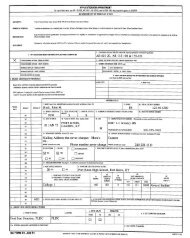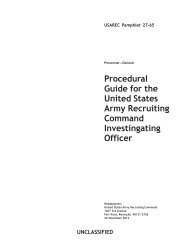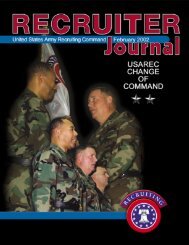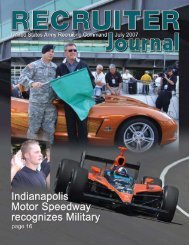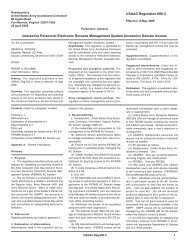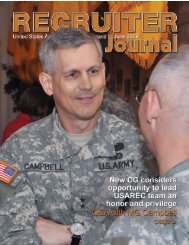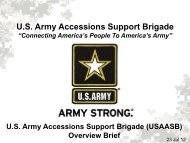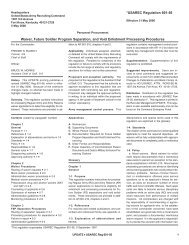You also want an ePaper? Increase the reach of your titles
YUMPU automatically turns print PDFs into web optimized ePapers that Google loves.
Talking While Driving<br />
Not a Good Thing!<br />
By The National Safety Council<br />
Using cell phones while driving is a very high risk<br />
behavior with significant impact on crashes and society.<br />
More than 50 peer-reviewed scientific studies have<br />
identified the risks associated with cell phone use while driving.<br />
Drivers who use cell phones are four times more likely to be in<br />
a crash while using a cell phone. That’s according to a1997 New<br />
England Journal of Medicine examination of hospital records<br />
and a 2005 study from the Insurance Institute for Highway<br />
Safety linking crashes to cell phone records.<br />
Studies conducted at the University of Utah show there is no<br />
difference in the cognitive distraction between hand-held and<br />
hands-free devices and that talking to a passenger while driving<br />
is significantly safer than talking on a cell phone.<br />
Statistics from the Harvard Center of Risk Analysis show cell<br />
phone use contributes to an estimated six percent of all crashes,<br />
which equates to 636,000 crashes, 330,000 injuries, 12,000<br />
serious injuries and 2,600 deaths each year. The center also<br />
estimates the annual cost of crashes caused by cell phone use<br />
to be $43 billion.<br />
Eighty percent of crashes are related to driver inattention.<br />
There are certain activities that may be more dangerous than<br />
talking on a cell phone. However, cell phone use occurs more<br />
frequently and for longer durations than other riskier behaviors.<br />
Thus, the No. 1 source of driver inattention is cell phones<br />
according to a Virginia Tech 100-car study for the National<br />
Highway Traffic Safety Administration.<br />
It’s estimated that more than 100 million people use cell<br />
phones while driving. CTIA – The Wireless Association reports<br />
there are 270 million cell phone subscribers. A Nationwide<br />
Insurance public opinion poll shows 81 percent of the public<br />
admits to talking on a cell phone while driving.<br />
Many businesses understand the risks and are already taking<br />
action. Among National Safety Council members who responded<br />
to a survey, 45 percent — 651 of 1453 respondents —<br />
said their companies had a cell phone policy of some kind. Of<br />
those, 22 percent said they’ve re-engineered their processes to<br />
accommodate the policy and 85 percent said the policy did not<br />
affect productivity.<br />
Available research indicates that whether it’s a hands-free<br />
or hand-held phone, the cognitive distraction is significant<br />
enough to degrade a driver’s performance. This can cause a<br />
driver to miss key visual and audio cues needed to avoid a<br />
crash.<br />
The Code of Federal Regulations now restricts all drivers on<br />
military installations to hands-free cellular phone devices only.<br />
Subsequently, the TRADOC commander directed that the<br />
hands-free device requirement apply to all TRADOC military<br />
personnel and that includes while driving POVs, on or off post.<br />
<strong>USAREC</strong> Policy H-4, dated Feb. 1, 2006, states: While<br />
operating a government owned vehicle, cell phones are<br />
authorized for use only after the operator pulls the vehicle off<br />
the road. GOV operators are not authorized to use hands-free<br />
kits. <strong>USAREC</strong> personnel must observe state laws and local<br />
ordinances that prohibit the use of cell phones while driving.<br />
Bottom line is all military service members in <strong>USAREC</strong> must<br />
use hands-free devices when driving a POV regardless of your<br />
duty status or location. The use of cell phones and or the use<br />
of hands-free kits are not authorized while operating a GOV.<br />
Only GOV drivers safely parked are authorized to use cell<br />
phones.<br />
SAFETY | <strong>RJ</strong><br />
RECRUITER JOURNAL | MARCH 20<strong>09</strong> | 21




